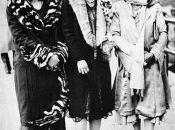Island hopping during World War II was a strategic military campaign employed by the Allied forces in the Pacific Theater. This strategy involved seizing control of key islands to advance towards the Japanese mainland, bypassing heavily fortified islands deemed less strategically vital.
The island-hopping campaign aimed to secure forward bases, denying Japan essential supply lines, and reducing the need for direct assaults on heavily defended islands. The Pacific islands served as stepping stones for the Allies, enabling them to establish airfields, naval bases, and supply depots, facilitating further advances.
The campaign commenced after the pivotal Battle of Midway in 1942 and progressed through a series of amphibious assaults across the Pacific, such as Guadalcanal, Tarawa, Saipan, Iwo Jima, and Okinawa. Each conquest provided a launching point for subsequent attacks, gradually encircling Japan and isolating its forces.
The strategy was devised to overcome the logistical challenges and high casualties associated with direct assaults on heavily fortified Japanese-held islands. By bypassing some islands and focusing on strategic targets, the Allies aimed to swiftly move closer to Japan while neutralizing threats posed by isolated enemy strongholds.
Ultimately, island hopping was a pivotal strategy that contributed significantly to the Allied victory in the Pacific. It demonstrated the effectiveness of strategic planning, amphibious warfare tactics, and the importance of seizing key territories to gain a foothold in the Pacific Theater, ultimately leading to the eventual surrender of Japan in 1945.

Map of island hopping during WW2 (Wikimedia)
What about island hopping during World War 2 interesting facts? Here are 12 interesting facts about island hopping during world war 2.
- Strategic Approach: Island hopping was a military strategy developed by the Allies, primarily the United States, to advance through the Pacific by capturing strategically important islands held by the Japanese.
- Key Objectives: The strategy aimed to bypass heavily fortified Japanese-held islands, instead targeting key islands that provided airfields, naval bases, and strategic positions for further advances.
- Strategic Importance: The campaign commenced after the Battle of Midway in 1942 and continued through a series of amphibious assaults, enabling the Allies to establish bases closer to Japan.
- Guadalcanal: The Battle of Guadalcanal marked a significant turning point, being the first major Allied offensive in the Pacific, establishing a foothold in the Solomon Islands.
- Tarawa: The Battle of Tarawa, fought in November 1943, highlighted the challenges of amphibious assaults due to heavily defended islands, but its capture provided a crucial base for future operations.
- Saipan: The Battle of Saipan, in June-July 1944, was a key victory for the Allies, securing a crucial airfield and bringing Japan within range of Allied bombers.
- Iwo Jima: The Battle of Iwo Jima, in early 1945, was fiercely fought, resulting in a strategic victory for the Allies and provided vital airfields for B-29 bomber operations.
- Okinawa: The Battle of Okinawa, the largest amphibious assault in the Pacific, was a bloody and pivotal battle, showcasing the intense nature of island warfare and the tenacity of both sides.
- Kamikaze Attacks: The campaign witnessed extensive kamikaze (suicide) attacks by Japanese pilots, using planes as guided missiles, inflicting heavy casualties on Allied forces.
- Logistical Challenges: Island hopping posed logistical challenges due to the vast distances, harsh terrain, and the need to rapidly secure and defend newly captured islands.
- Naval and Aerial Dominance: The success of island hopping showcased the Allies’ naval and aerial superiority, allowing them to project power and effectively isolate Japanese-held territories.
- Impact on Japan: Island hopping ultimately encircled Japan, placing it within range of devastating Allied air raids, culminating in Japan’s surrender in August 1945 following the atomic bombings of Hiroshima and Nagasaki.
Island hopping during World War II emerged as a defining strategy, marking a pivotal shift in military tactics and shaping the Pacific Theater’s course. This methodical approach, devised by the Allies, strategically bypassed heavily fortified Japanese-held islands while securing key positions to advance towards the Japanese mainland. Through a series of hard-fought battles and amphibious assaults across the vast expanse of the Pacific Ocean, the campaign showcased the resilience, tenacity, and adaptability of both Allied and Japanese forces. Island hopping’s success not only highlighted the significance of securing strategic positions but also underscored the bravery and sacrifice of those who fought in this arduous campaign. Ultimately, this strategic maneuvering contributed significantly to the Allied victory in the Pacific, altering the trajectory of the war and shaping the future of the region.





